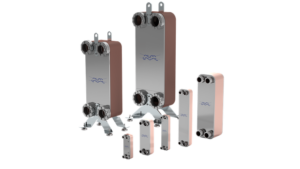CIP (cleaning in place ) :
Introduction :
The CIP station is a modularised skid mounted plug-in unit for automated cleaning-in-place.
Application :
Cleaning-in-place of brewery process installations such as piping systems, tanks, filling machines and heat exchangers.

Benefits :
- Low losses
- Automatic control
- Sanitary design
- Robust construction and compact design
- Versatile and adaptable to different process requirements.

Design :
The CIP station cleaning regime is fully adjustable to what is required for the individual object in terms of cleaning time, temperature, pressure and flow. The modular concept is flexible and allows incorporation of up to four CIP tanks and can be designed for CIP flows up to 400 hl/h. The automation system can support up to 15 different and individually optimised cleaning programs.
The system can include detergent tanks but can also be adapted to utilise existing tanks provided by customer. In its basic configuration the system consists of one CIP pressure line but additional lines can be added to allow simultaneous
cleaning.
The basic CIP station unit is compact, self-contained, factory preassembled on frame and tested before delivery.
In compliance with food industry regulations, all components are made of stainless steel with heat resistant seals.
Working principle :
The cleaning solution is pumped through the specially designed plate heat exchanger, where it is heated to required temperature. It is then routed to the object to be cleaned and back to the circulation tank included in the CIP module. After each cleaning phase the cleaning solution is routed to drain or back to the detergent tank for later re-use.
A normal sequence could include initial water rinse, lye cleaning, intermediate water rinse, acid cleaning and final water rinse followed by chemical or hot water disinfection.
During the whole cleaning cycle the temperature, flow and detergent concentration in the CIP return line are automatically controlled.
The system furthermore includes automatic make-up of cleaning solutions. This preparation program can be started by the operator or automatically at a specified time or after a selected number of cleaning sequences.
A control panel with a PLC monitors the automatic plant operation and relevant process data are displayed on the colour screen operator interface, such as:
- Actual and set point process values
- Tank volumes
- Plant status
- Controller settings
- Alarm status.
A fail-safe system is monitoring the operation.
Options :
- Detergent tank(s)
- Chart recorder
- CIP return pump for tank cleaning
- Remote control
- Communication with other control systems via data bus.
Resource : Alfa Laval







